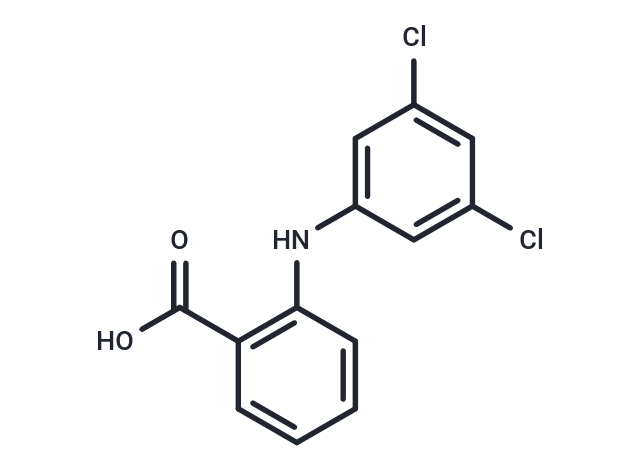Powder: -20°C for 3 years | In solvent: -80°C for 1 year


Dichlorophenyl-ABA is a transthyretin (TTR) amyloid fibril formation inhibitor. It inhibits aggregate formation in more than 80% in TTR L55P-expressing cells.

| Pack Size | Availability | Price/USD | Quantity |
|---|---|---|---|
| 25 mg | 6-8 weeks | $ 1,300.00 | |
| 50 mg | 6-8 weeks | $ 1,690.00 | |
| 100 mg | 6-8 weeks | $ 2,500.00 |
| Description | Dichlorophenyl-ABA is a transthyretin (TTR) amyloid fibril formation inhibitor. It inhibits aggregate formation in more than 80% in TTR L55P-expressing cells. |
| In vitro | Dichlorophenyl-ABA can prevent L55P aggregate formation in the conditioned medium. Dichlorophenyl-ABA is the best stabilizers of V30M tetramers in plasma from carriers of this mutant, and clearly inhibit aggregation in the cellular system. With regard to the ultrastructural analysis, Dichlorophenyl-ABA does not show an inhibitory effect as high as DFPB and benzoxazole. Therefore Dichlorophenyl-ABA is promising for the treatment of valine at position 30 (V30M)-associated familial amyloidotic polyneuropathy (FAP). However, it needs to undergo further stages of drug development to overcome its toxicity. |
| Molecular Weight | 282.12 |
| Formula | C13H9Cl2NO2 |
| CAS No. | 18201-65-5 |
Powder: -20°C for 3 years | In solvent: -80°C for 1 year
You can also refer to dose conversion for different animals. More
bottom
Please see Inhibitor Handling Instructions for more frequently ask questions. Topics include: how to prepare stock solutions, how to store products, and cautions on cell-based assays & animal experiments, etc.
Dichlorophenyl-ABA 18201-65-5 Others Dichlorophenyl ABA DichlorophenylABA inhibitor inhibit
